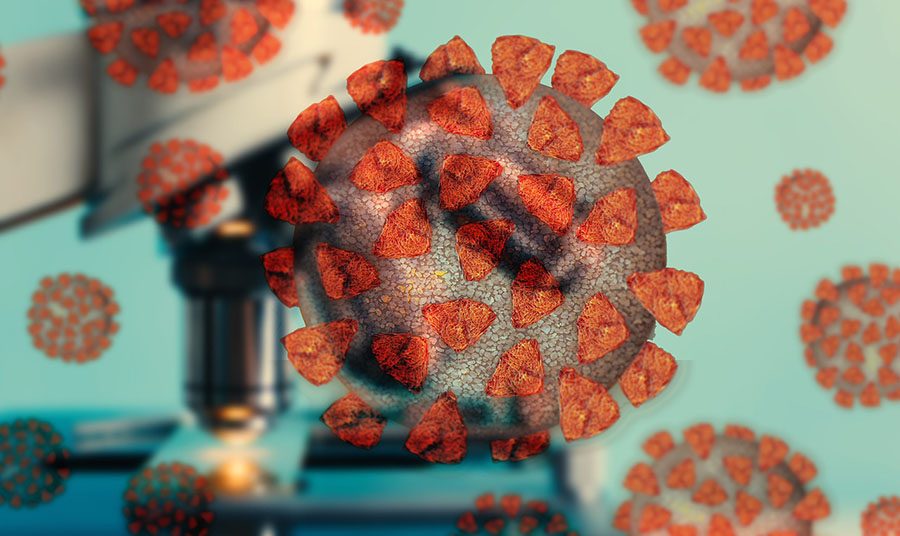Myovant Sciences Ltd. (MYOV:NYSE) is an emerging biotech leader focused on developing and commercializing innovative therapies for women's health and endocrine diseases. Its lead drug development candidate, Relugolix, is an oral gonadotropin-releasing hormone (GnRH) receptor antagonist that rapidly lowers estrogen and progesterone in women and testosterone levels in men when administered once daily.
In our view, the drug candidate has the potential to be a best-in-class molecule with superior efficacy, an improved safety profile and more convenient oral dosing options. The compound is currently being tested in three Phase 3 trials, two in woman's health and one in prostate cancer. One of the company's key strengths is its experienced leadership team, highlighted by the demonstrated success of its CEO, Dr. Lynn Seely. Dr. Seely was Chief Medical Officer at Medivation from 2005-2015 and led the development of XTANDI. Adding to her stellar resume, she is board certified in internal medicine and endocrinology and metabolism, and completed a clinical fellowship in endocrinology and metabolism at UC San Diego. In addition to Dr. Seely, the team includes Bryan Selby who spent nearly a decade at Medivation, most recently as SVP, Product Strategy, and Dr. Laura Williams, M.D., MPH who spent 18 years at Abbott/AbbVie and served as R&D Group Project Leader in Women's Health.
In our view, MYOV has an excellent combination of an attractive Phase 3 asset and an experienced management team assembled to maximize shareholder value through astute drug development. We are initiating coverage of MYOV as a BUY under 17 with a target price of 25.
About Relugolix
Relugolix is an oral, once-daily, small molecule GnRH receptor antagonist that has been evaluated in ~1,600 patients. In these trials, relugolix has been shown to be generally well-tolerated and to suppress estrogen and progesterone levels in women and testosterone levels in men. Common side effects are consistent with suppression of these hormones. In the ongoing Phase 3 SPIRIT clinical trials—SPIRIT 1 and SPIRIT 2 in women with endometriosis-associated pain—and the ongoing Phase 3 LIBERTY clinical trials—LIBERTY 1 and LIBERTY 2 in women with heavy menstrual bleeding associated with uterine fibroids—relugolix will be evaluated with and without low-dose hormonal add-back therapy, the addition of which is expected to decrease potential side effects such as bone mineral density loss and hot flashes. The ongoing Phase 3 HERO study is evaluating relugolix in men with advanced prostate cancer.
Competition
MYOV is likely to be the second GnRH antagonist on the market in what is an estimated $4+ billion market opportunity. AbbVie's/Neurocrine's Elagolix is in the lead and is expected to be approved by year-end/early 2018. In our view, there is room for another GnRH antagonist on the market to treat endometriosis/uterine fibroids, and by launching a few years later, MYOV could capitalize on AbbVie's efforts to educate the market. To counter act the bone loss seen with relugolix/Elagolix, MYOV has coformulated its drug with estradiol/norethindrone acetate addback (about 1/5 of a contraception dose). In addition to differences on bone mineral density and use of add-back therapy, relugolix has a significantly better half-life versus elagolix (37-42 hours versus 2–6 hours, respectively). The longer half-life and better specificity support once-daily dosing for relugolix and a lower dose than elagolix (40mgs daily vs. 150-600mgs daily). MYOV believes that ability to dose once daily in both indications, as well as use of a fixed dose combination (versus elagolix, which could require separate add-back in certain indications), should provide an advantage over elagolix in both efficacy, safety and convenience.
Endometriosis and Uterine Fibroids Background
Endometriosis and uterine fibroids are benign gynecologic disorders involving aberrant depositing of endometrial tissue outside of the uterus (endometriosis) or growth of muscle/connective tissue on the uterine wall (uterine fibroids). Both conditions are hormone sensitive, meaning each is responsive to the signals accompanying each menstrual cycle, setting off a cascade of events, including release of prostaglandins and promotion of inflammation. Though there is wide overlap of symptoms, endometriosis is associated more with chronic pelvic pain, often heightened during menstruation (dysmenorrhea) or sexual intercourse (dyspareunia), while abnormal bleeding is a hallmark of uterine fibroids.
The central tenet of treating each condition is to suppress the production of estrogen that exacerbates the relevant lesion or fibroid. As such, oral contraceptives (OCPs), continuous use contraceptives, or in more severe cases GnRH agonists or surgery (i.e., hysterectomy) are commonly used. Pain medications, typically NSAIDs, are used as an adjunct to the above medications. Though GnRH agonists generally are very effective, as an injectable therapy with meaningful side effects, a minority of patients (~15-20%) complete a six-month course, and few stay on therapy beyond the six-month mark. Thereafter, women are left with limited options. With this in mind, ~375,000 cumulative hysterectomies are performed annually in the U.S. due to these conditions.
Takeda's Phase 3 Trials
MYOV's partner Takeda recently reported positive top-line results from a Phase 3 trial evaluating the efficacy and safety of relugolix compared with leuprorelin for the treatment of uterine fibroids in Japanese women. In the trial, relugolix successfully demonstrated noninferiority to leuprorelin with 82.2% of patients treated with relugolix achieving a score of less than 10 on the Pictorial Blood Loss Assessment Chart (PBAC), compared with 83.1% of patients treated with leuprorelin (p = 0.0013). The incidence of adverse events in the Phase 3 study was generally similar between treatment groups and consistent with the mechanism of action of the study medications.
The Phase 3 trial was a multi-center, randomized, double-blind non-inferiority study conducted in Japan to evaluate the efficacy and safety of relugolix in approximately 280 women with heavy menstrual bleeding associated with uterine fibroids. Patients were randomized 1:1 to receive either relugolix 40 mg, administered orally once daily, or leuprorelin, administered by subcutaneous injection every four weeks, at a dose of 1.88 mg or 3.75 mg, for 24 weeks. Leuprorelin, or leuprolide acetate, is an injectable GnRH agonist.
Takeda is conducting a second Phase 3 trial evaluating relugolix in approximately 70 Japanese women who have pain associated with uterine fibroids and anticipates preliminary top-line data soon, in the Q4:17. Takeda plans to submit the data from both studies to regulatory authorities in Japan for approval to treat uterine fibroids in 2018.
Myovant's Phase 3 Program for Uterine Fibroids
MYOV is currently conducting a Phase 3 clinical program consisting of two international, replicate pivotal clinical trials (LIBERTY 1 and LIBERTY 2), initiated in January 2017. Women with heavy menstrual bleeding associated with uterine fibroids in the LIBERTY 1 and LIBERTY 2 trials are randomized in a 1:1:1 ratio to one of three arms. Women receive treatment with relugolix 40 mg once daily coadministered with commercially available low-dose hormonal add-back therapy for 24 weeks, relugolix 40 mg once daily monotherapy for 12 weeks followed by relugolix 40 mg once daily co-administered with hormonal add-back therapy for an additional 12 weeks, or placebo once daily for a period of 24 weeks. Approximately 390 women are targeted to be enrolled in each of the two replicate LIBERTY 1 and LIBERTY 2 trials, with 130 women in each of the two active treatment arms and 130 women in the placebo arm. To be enrolled, women must have a monthly menstrual blood loss of at least 80 mL, measured by the alkaline hematin method, a quantitative measure of menstrual blood loss.
The primary efficacy endpoint for LIBERTY 1 and LIBERTY 2 is the proportion of all women enrolled who achieve a menstrual blood loss volume of less than 80 mL and at least a 50% reduction in menstrual blood loss volume from baseline over the last month of treatment as measured by the alkaline hematin method. The secondary efficacy endpoints include measures of change from baseline in hemoglobin, assessment of the impact of therapy on quality-of-life measures, the reduction in uterine and fibroid volume, and pain reduction. Safety, including bone mineral density changes as measured by dual-energy x-ray absorptiometry, is also being assessed.
Second Pipeline Asset is RVT-602 for Infertility
As part of the deal with Takeda, MYOV also acquired the rights to RVT-602, an oligopeptide kisspeptin analog. Kisspeptin is a naturally occurring peptide that works with other neuropeptides to regulate GnRH pulse generation. Kisspeptin plays an important role in regulation of reproductive function and fertility. This is a significant market opportunity with an estimated 10% of women ages 15-44 can have difficulty getting pregnant. One of the primary causes of female infertility is polycystic ovary syndrome (PCOS), or a disruption in ovulation, which is caused by a hormone imbalance. The major cause of hormone imbalance is hypothalamic-pituitary dysfunction, indicating that there is a role for use GnRH modulation. In order to stimulate ovulation, patients are typically administered preparations of FSH and LH to promote egg growth and maturity. Once eggs are mature, patients are given human chorionic gonadotropin or a GnRH agonist to induce ovulation. However, there are some safety/tolerability concerns surrounding use of both of these; most technologies are not very effective. MYOV plans to develop the drug as a safer alternative to assisted reproduction, and is looking to start a Phase 1 SAD trial in 2H17 in healthy female volunteers, followed by an open-label Phase 2 trial in women undergoing IVF. Both studies will focus on safety of the drug development candidate, especially as it relates to ovarian hyperstimulation syndrome. We expect MYOV to in-license additional drug development candidates in the woman's health field as its unique focus and experience will make it one of the partners of choice in woman's health.
License Agreement with Takeda
MYOV entered into a license agreement with Takeda in April 2016 through which Takeda granted exclusive license for TAK-385 (now relugolix) and TAK-448 (now RVT-602). The licenses are not specific to any individual indications and cover all countries worldwide except for a few select Asian countries (Japan, China, Hong Kong, Indonesia, Korea, Malaysia, Philippines, Singapore, Taiwan, Thailand, Vietnam) where Takeda is developing relugolix. Myovant owes Takeda a high single-digit royalty on relugolix sales in the rest of the world. MYOV also has rights to develop relugolix for prostate cancer worldwide, including the Takeda territories. While the trial design and endpoints of the Takeda Phase 3 trials differ from those in the Phase 3 trials MYOV is currently conducting, the data from the Takeda trial will be used to support MYOV's NDA filing package.
Myovant's lead asset, Religolix, is a once-a-day oral GnRH antagonist for use in endocrine diseases that is currently in three Phase 3 trials that represent significant market opportunities. GnRH modulation has been validated in a series of studies in prostate cancer, breast cancer, endometriosis and uterine fibroids—all diseases where regulation of pituitary hormones may play a role. In addition, there are already a number of GnRH agonists on the market, as well as a few antagonists, further validating the mechanism of action.
In our view, Relugolix could become a best-in-class drug as it may provide advantages over the existing agonists and antagonists through superior efficacy, an improved safety profile and more convenient oral dosing options. MYOV's experienced management team has already positioned the drug development candidate for success by initiating three Phase 3 trials that address large market opportunities. The recent positive Phase 3 trial from Takeda has further de-risked religolix after meeting its primary endpoint. In our view, the results represent a "best-case outcome" and have a clear positive read through to the ongoing Phase 3 trials in uterine fibroids and endometriosis.
John McCamant is the editor of the Medical Technology Stock Letter, a leading investment newsletter. McCamant has spent 25 years on the frontlines of biotechnology investing. He has established an extensive network that includes contacts throughout the investment banking and venture capital communities. His expertise in biotechnology investments is a subject of media interest. He is frequently consulted and quoted by The Washington Post, Reuters, Bloomberg, CBS and Marketwatch.
Want to read more Life Sciences Report articles like this? Sign up for our free e-newsletter, and you'll learn when new articles have been published. To see recent articles and interviews with industry analysts and commentators, visit our Streetwise Interviews page.
Disclosure:
1) John McCamant: I, or members of my immediate household or family, own shares of the following companies mentioned in this article: Myovant Sciences. I personally am or members of my immediate household or family are, paid by the following companies mentioned in this article: None. My company has a financial relationship with the following companies mentioned in this article: None. I determined which companies would be included in this article based on my research and understanding of the sector.
2) The following companies mentioned in this article are sponsors of Streetwise Reports: None. Streetwise Reports does not accept stock in exchange for its services. Click here for important disclosures about sponsor fees. The information provided above is for informational purposes only and is not a recommendation to buy or sell any security.
3) Statements and opinions expressed are the opinions of the author and not of Streetwise Reports or its officers. The author is wholly responsible for the validity of the statements. The author was not paid by Streetwise Reports for this article. Streetwise Reports was not paid by the author to publish or syndicate this article.
4) This article does not constitute investment advice. Each reader is encouraged to consult with his or her individual financial professional and any action a reader takes as a result of information presented here is his or her own responsibility. By opening this page, each reader accepts and agrees to Streetwise Reports' terms of use and full legal disclaimer. This article is not a solicitation for investment. Streetwise Reports does not render general or specific investment advice and the information on Streetwise Reports should not be considered a recommendation to buy or sell any security. Streetwise Reports does not endorse or recommend the business, products, services or securities of any company mentioned on Streetwise Reports.
5) From time to time, Streetwise Reports LLC and its directors, officers, employees or members of their families, as well as persons interviewed for articles and interviews on the site, may have a long or short position in securities mentioned. Directors, officers, employees or members of their immediate families are prohibited from making purchases and/or sales of those securities in the open market or otherwise from the time of the interview or the decision to write an article, until one week after the publication of the interview or article.




























































